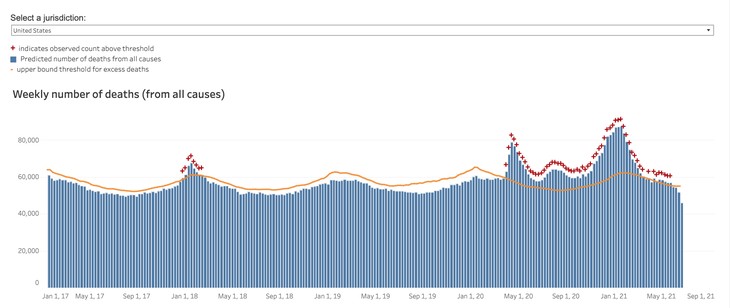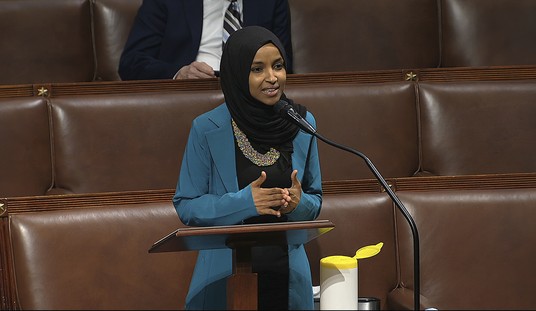Two counties in California have reviewed every COVID-19 fatality, refining the approach to classifying the cause of death. Santa Clara and Alameda County delineated those patients who died due to the illness progression of COVID-19 and those who tested positive at the time of death but were not symptomatic. This exercise reduced the number of COVID-19 deaths in both counties by nearly 25%.
Early in the pandemic, questioning the COVID-19 death count was labeled a conspiracy theory by the corporate media. This position was always absurd based on the very loose criteria put out by the National Center for Health Statistics for counting a COVID-19 death. The ability to presume COVID-19 and place it as a cause of death during a period of perverse financial incentives for hospitals invited inflation of the fatality numbers. Medicare increased payment for COVID-19 patients, and private insurers covered the charges in full. These policies prevented the loss of co-pays and co-insurance unpaid by patients and additional reimbursement from government programs.
Any overpayments at this point are sunk costs. Public health authorities used COVID-19 hospitalizations as a reason to postpone many elective procedures. Not all delays of these procedures were rational, but fear and uncertainty reigned. How this will impact the quality of life and health of many Americans remains to be seen.
Dr. Monica Gandhi, professor of medicine and infectious disease at the University of California San Francisco, believes the CDC will ask all counties to do a similar assessment and believes an accurate accounting matters:
“It is important to go back and do this accounting to see if COVID was actually the cause of death. I think that transparent communication is an upside, I mean, in the sense that it’s true that if we did this across the nation, it would bring our death rate lower. A downside of that, could be that people will say, ‘Well, it wasn’t as serious as you said.'”
“In the midst of everything COVID people were sort of putting down that cause of death as COVID. It is important to go back and do this accounting to see if COVID was actually the cause of death.”
It is possible the analysis in the two counties was still too generous. A review of COVID-19 deaths in Minnesota found nearly 40% of deaths recorded were not attributable to COVID-19. Another study in New Jersey found that 89% of COVID-19 deaths were among patients with do-not-resuscitate orders before contracting the virus. Under normal conditions, patients with a terminal disease are not considered to have died from a respiratory virus in end-stage illness.
It may send their body into a crisis it cannot overcome, contributing to a death a bit sooner than without it. This chain of events is typical in end-stage disease. Imperial College researcher Neil Ferguson predicted this type of pattern in testimony before the British Parliament early in the pandemic:
“By the end of the year, what proportion of those people who’ve died from COVID-19 would have died anyhow?” Ferguson asked. “It might be as much as half to two-thirds of the deaths we’re seeing from COVID-19, because it’s affecting people who are either at the end of their lives or in poor health conditions. So I think these considerations are very valid.”
The current provisional death counts from the CDC indicate we may be seeing this trend. Roughly six months after the peak of the second wave, weekly deaths from all causes beginning the week of June 12 are falling below the excess death threshold. The data shows similar trends in deaths from the diseases that put patients at the highest risk for severe COVID-19, including diabetes, Alzheimer’s and other types of dementia, chronic respiratory diseases, and hypertensive conditions:

Whether these “pull forward” deaths should be counted as COVID-19 deaths is up for debate. At a minimum, breaking them out is appropriate. The death of a terminally ill patient is tragic for their loved ones. However, from a public health perspective, they should not be a consideration in decision-making. Failure to delineate this trend from the beginning is a failure of data collection and communication.
This type of detailed analysis is what the CDC has been performing on breakthrough hospitalizations and deaths. The agency specifies the median age of those who die after vaccination and whether their hospitalization is “with” COVID-19 or “for” COVID-19. The agency does the same analysis for deaths. As of April, 18% of post-vaccination deaths “with” COVID-19 were not “of” the virus. Nearly 30% of hospitalizations were for something other than COVID-19, even when patients tested positive.
If the CDC asks counties to update the death counts as Dr. Gandhi predicts, they need to provide the criteria they use for post-vaccination monitoring. The agency should require the same review of hospitalizations. A different study found that COVID-19 hospitalization rates for children in several California hospitals overreported by 40%. It is logical to assume this trend would extend to COVID-19 hospitalizations for adults as well.
As Dr. Gandhi noted, this could be a double-edged sword. For some who have been questioning the numbers since the beginning, the temptation will be to say, “Told you so.” However, depending on the actual percentage of error, protections need to be put in place to prevent a similar mistake again. The daily trackers were used to increase fear and as justification for destructive economic policies. Americans deserve to see the accurate numbers.










Join the conversation as a VIP Member